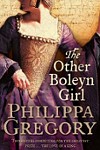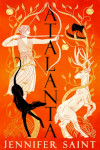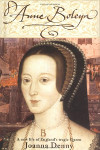Philippa Gregory – The Other Boleyn Girl
Posted 2nd May 2010
Category: Reviews Genres: 2000s, Historical
1 Comment

Gregory has always been rather popular but never more so than when her best-loved book, The Other Boleyn Girl, was picked up by Hollywood.
Publisher: Harper Collins
Pages: 529
Type: Fiction
Age: Adult
ISBN: 978-0-006-51400-8
First Published: 2001
Date Reviewed: 19th January 2010
Rating: 1.5/5
Nowadays it seems anyone who’s anyone has read this book or is planning to read it. Its second time in the spotlight triggered a new set of fans. But the problems in the book vastly outweigh the successes and leave one feeling unsatisfied.
Before Anne there was Mary. When Mary is set up at fourteen years old to draw King Henry VIII to her affections she is little more than a naive girl, a pawn in the game her family have designed. The trap works and soon she is having an affair with the king and siring his children, estranged from the husband she was forced to cheat on. But it’s not good enough for the Boleyn family’s goal and she has to yield to her sister who employs a different tactic and gains the king as a husband. Though Mary is seen as just another girl to be used to effect it may be that she has the last laugh.
Within moments of starting the book it’s painfully obvious that Gregory’s work is akin to that of a fan following the demise of their favourite show, and it’s clear that the book was born of dreams pertaining to “what if…” situations. By using Mary as her narrator (the story is told in the first person) Gregory is able to get around events that she doesn’t want to discuss, and has moulded Mary into her own creation as she deems fit. The problems here are that Gregory’s Mary isn’t compelling enough a storyteller and leaves out important details, tending to describe instead her daily routines. The uproar over Anne’s succession is given copious time and Gregory should be commended for giving the reasons for it – but she fails to approach the major factor of the reformation. The only information provided is the Pope’s reluctance to make a decision over the proposed annulment and excommunication of Henry from the Roman Catholic Church. Anyone reading the book without good knowledge of the history of Christianity would assume it was a minor problem. Gregory has her rights as a novelist, but she also has her duties to the history she is using for her own gain. Henry’s pursuing of the church is hardly mentioned and it doesn’t matter who had been chosen to narrate the story – the reformation had such an impact that no one would have failed to mention it, especially not one in such a position as Mary’s.
Katherine of Aragon’s plight comes secondary – as is to be expected in a book focused on the Boleyns – but the way in which Mary constantly thinks back to her after she is dethroned is shameful. In the book Mary does as she is bid by her family, and feels sorry for Katherine. It’s good that she feels bad for having wronged Katherine, it’s a pity she didn’t realise it properly and give it its fair dues sooner.
The feelings of guilt serve in turn as another of the books drawbacks: repetition. Much like Lesley Downer for The Last Concubine, Gregory constantly has her narrator thinking of the very same things she thought about only chapters ago. This happens in reality but as part of a book it has no place. You learn that Mary reminisces over Katherine when her sister performs the same actions as the former queen did but you don’t need it said all the time and especially not in the exact same words.
Gregory’s writing style is adequate at best. This would be fine if she had a good story to tell and it was simply a case of not being good with words. One thing that is interesting however is the lack of spelling and grammatical errors in the book – a rarity today. Pity then that we must attribute that to the publishers rather than Gregory.
Gregory has a right, as a novelist, to change facts (or tempt further discussion by raising issues that have never been proved one way or another), but she goes too far. She clearly sees no redeeming qualities in Anne Boleyn whatsoever and sets out to demonise her. When reading, it is hard not to dislike Anne for her actions but that doesn’t speak for the bigger picture. Historically, Anne was unlikely as poisonous a person as detailed and as such Gregory comes across as having a mighty chip on her shoulder. She is happy when able (by one of her few historical accuracies no less) to condemn Anne to death and put Jane Seymour on the throne. She delights in making George Boleyn incestuous and homosexual and in incest a partner in the creation of a “monster” baby. It’s unnecessary and comes across as a rant against something she had no hand in rather than a good read. Anyone looking to study the period having read this book is wholly unprepared.
So to the book’s positive points – there are only two. Since the book is set mostly at court and has been stripped of most compelling events it drones on and on like the terms and conditions of a poorly produced product. Thus when the story moves to the countryside the sun almost literally shines and the 529 pages of small print seem a lot shorter. It would be even better if Gregory was adept at describing locations but we can let that pass. Unfortunately these moments don’t last long, just as you’re settling yourself down for a more leisurely read Mary is recalled back to court. The second positive point is the end of the book where there is finally some real action and a reason to speed-read.
A tribute to history and the lives of those caught up in a narrow-minded and selfish society this is not. There are so many books out there on Tudor history and even the dull ones are a darn sight better than this.
Related Books
1 Comment
Comments closed


























May 2, 2010, 6:05 pm
I’ve read “The Virgin Lover” by Philippa Gregory a few years ago and I felt quite the same about it as you do about this book. I was underwhelmed and did not really get why Gregory seems to be one of the most popular historical fiction writers. I have yet to read The Other Boleyn Girl, but it’s been waiting on my shelves for years. Simply because I bought it together with the Virgin Lover and never felt the need to pick it up. The movie was enjoyable (but nothing special) though.
Charlie: That sounds similar to me – I bought this one together with The Queen’s Fool, but knowing I didn’t like this I’m reluctant to try the next, even if it would add another book to a challenge I’m doing. I’d like to read The Virgin Lover, because of my new interest in Elizabeth I, but you saying what you have about it being the same maybe I’ll leave it until I’ve read everything else I want to read. I’m unsure about seeing the movie, I’ve heard it’s quite unlike the book (though that might be a good thing!)